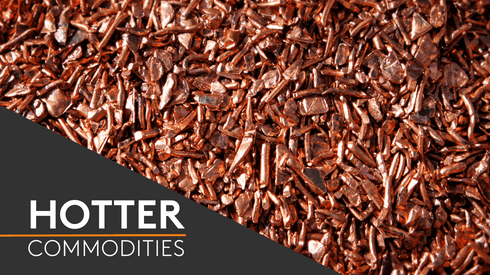Price moves
Fastmarkets’ standard-grade cobalt assessment rose 2.2% to $13.75-14.4 per lb on Friday March 29, the last pricing session in March. The rally came after a 5-cent up-tick at the high end of the range on March 27.
After a sharp decline between December and February, cobalt prices began to gradually stabilize in March as suppliers started to become increasingly reluctant to offer aggressive discounts after previous selling pressure had been eased.
Meanwhile, many market participants started to hold a belief that further downside on prices would be limited, which resulted in consumers and traders coming back into the market to restock.
That said, the consensus is that the resumption in buying appetite does not necessarily signal the beginning of a return to 2018’s multi-year highs due to changing buying styles and consumers continuing to take a cautious approach to metal purchases in a market prone to big moves.
In China, local cobalt prices quickly tracked the upsides seen in the international market which triggered strong inquiries from domestic consumers who had been minimizing procurement amid a falling market and keeping their inventory levels deliberately low.
Fastmarkets’ Chinese cobalt metal price assessment rose to 255,000-285,000 yuan ($38,002-42,473) per tonne on March 29, up from 245,000-285,000 yuan per tonne previously. The price edged up from the previous pricing session for the first time since mid-October 2018.
The rebound in the international cobalt metal price also capped the downside in those for key battery raw material cobalt sulfate at the end of March. Fastmarkets’ cobalt sulfate price assessment was steady at 45,000-47,000 yuan per tonne on March 29, its lowest point for two and a half years.
Market news
The spotlight has recently been cast on the London Metal Exchange’s new cash-settled cobalt contract, which is settled against Fastmarkets’ benchmark standard-grade cobalt price.
The new cash-settled contract is designed to meet mounting demand for hedging cobalt exposure amid strong cobalt price volatility seen in the past two years amid growing interest in the blue metal as a result of the boom in battery materials for electric vehicles (EVs).
China, one of the world’s most prominent supporters of the greater adoption of EV s, announced a new subsidy policy at the end of March that would see subsidies in 2019 only paid on electric vehicles with higher driving ranges and energy density. At the same time, the values of the subsidies are to be reduced by 50% to a maximum of 25,000 yuan per vehicle produced.
“We expect Chinese EV production will rise sharply in the first half this year. Chinese EV producers are aiming to sell 1.5 million units in 2019. We expect half of the sales will be achieved in the first half this year as many producers look to get subsidies during the transitional period on those EVs they produce that will not be able to meet the new standards. Sales growth in the second half of this year is therefore likely to be lower than that in the first half year [due to] lower payables [of subsidies],” Fastmarkets battery materials analyst Vicky Zhao said.
Under the transitional period running between March 26 and June 25, EV makers who reached the subsidy standard for 2018 but fail to reach the new standard for 2019 will still get a portion of the subsidies outlined in the 2018 subsidy policy.
However, the majority of market participants downplayed the immediate acute downward pressure on Chinese cobalt sulfate prices. That said, they did acknowledge cobalt demand will be held in check in the long run as a result of the new subsidy policy, which is likely to result in greater use of alternative battery materials such as nickel.
In addition, the market was also closely watching the upstream end of the cobalt supply chain after the Democratic Republic of Congo (DRC) in mid-March lifted a ban on the export of cobalt and copper concentrates imposed in February.
However, the move failed to provide much relief to the market as the DRC government said that it was not ruling out the possibility of the ban being re-imposed at a later date.
Outlook
“As we have been saying for some time, with the elastic band stretched on the downside, prices could whip back quickly if bargain-hunting emerges. Having seen prices down close to 50% since the start of the year, and with strong growth reported in EV sales, downstream buyers might be looking to restock or investors might start to get interested,” Fastmarkets analysts said in their latest battery materials trackers.
With the market having become increasingly certain the benchmark standard-grade cobalt price has bottomed out, the question now on the minds of participants is how long the rebound could last, and how far the price could rebound.
As restocking appetite grows, some market participants Fastmarkets spoke to suggested the next resistant level could be as high as $20 per lb.
That said, the apparent ramp-up in cobalt raw materials, namely cobalt hydroxide production this year still remains as the strongest headwind.
“Although we would not be surprised if prices rise over the summer, we expect any increase to be short-lived,” Fastmarkets analysts said in their latest battery materials trackers.




